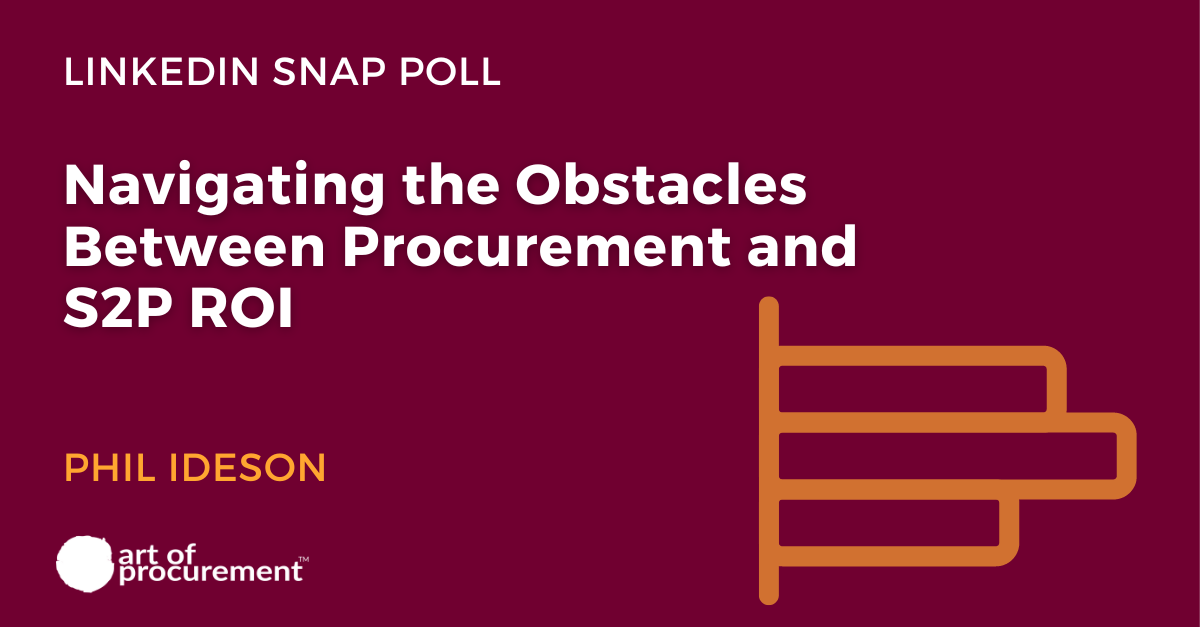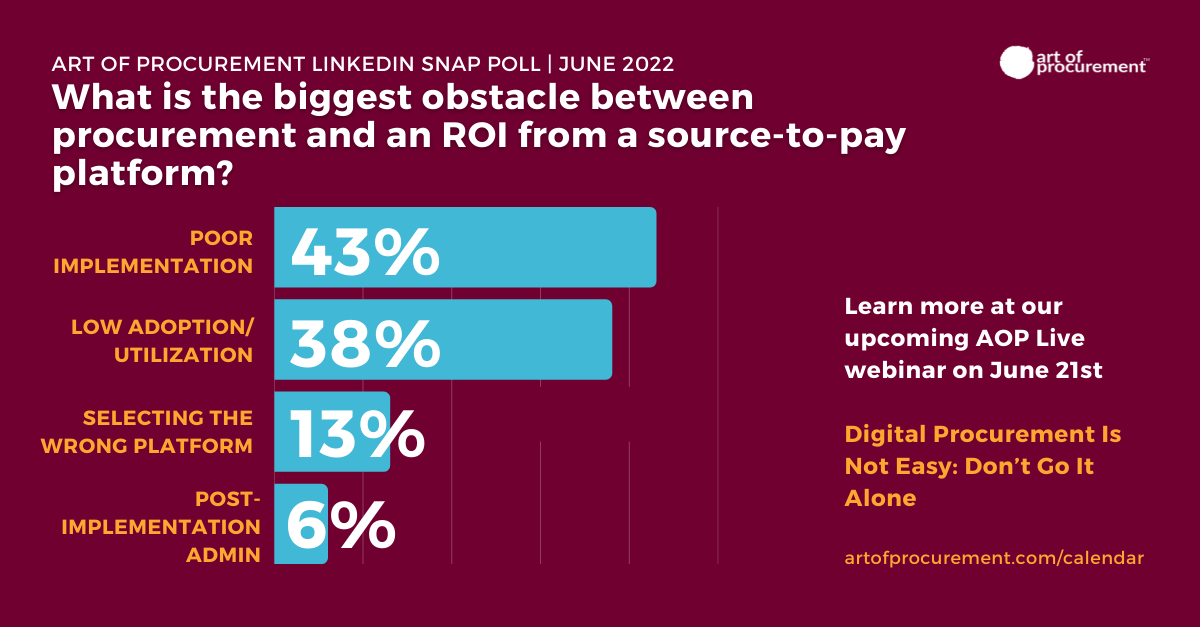
Last week I ran a LinkedIn poll to satisfy the curiosity of the Art of Procurement team… we’ve been having some interesting discussions leading up to next week’s AOP Live session with Corcentric.
We wanted to know… Why is it so common for procurement’s tech investments to fail to achieve their associated business case? Many of you voted and/or commented, and here are the results:

We always have a good time watching poll results come in (even if it does drag down our productivity a bit) and I can see why people voted for many of these options.
Platform selection is where procurement spends the most time. Maybe we think that guarantees we are doing a good job, based on the low response rate. The other way of explaining this result is that we may not think the platform we select matters all that much. And if that is the case, we should not be investing so much time on the selection process.
My personal experience is that S2P ROI is all about implementation and change management. I can’t count how many times I’ve seen a platform selected in the hopes that it will change everything on its own. Two years later, procurement looks back and nothing has changed. Can we really be surprised?
Admittedly, low adoption / utilization could cause the wrong platform to be selected or a lack of change management. What ongoing support, usage tracking, and governance is procurement providing? How are you evolving your processes to fit the technology or building the technology ecosystem to accommodate the current process? Maybe your use case has changed but the technology hasn’t changed with it?
We also received some interesting comments on the post, notably:
From Duncan Jones:
“1) Unclear or misguided objectives for the implementation,
2) Insufficient motivation of suppliers to participate
3) Replicating existing processes instead of driving transformation”
From Katherine McCleery:
“Dare I say, starting with bad data – despite the greatest tech, the most thorough implementation and even high adoption rates – will inhibit ROI.”
From Jens Christian Riegels Thisted:
“I think it depends very much on the company and industry. I am currently implementing a P2P platform. We have a very high focus on user adoption and supplier onboarding. But obviously it all starts with choosing the right system and avoiding scope creep.
Specifically on ROI – I believe that it’s important to have a clear idea on what and how you want to measure before you start implementation. And making sure that these expectations are aligned in your organization.”
From Jack Miles:
“In my many years and many initiatives, I have always done a PIE; post implementation evaluation. No one asked but we did it anyway. Wanting others to participate for credibility, very few offered someone.
We met most goals, missed some and over time we made up the deficiencies. Shopped it to individual business leaders; many said that’s what they expected.
Bottom line: folks want Business Cases to pick them apart but when it comes to demonstrating the validity; most don’t care.”
While we didn’t include a response about the viability of business cases in the poll, I’ve certainly seen them have a tenuous link with ROI – in other words, they can’t be measured. I have also seen business cases that were wildly off base. But does that mean the business case itself doesn’t matter?
Duncan’s comment is insightful as well. Procurement must remember that the motivation and incentives of all involved parties (including suppliers) should be a part of the change management effort.
If there is one take away from the votes and the comments, it is the need for procurement to invest more time and energy in solution scoping, implementation, and change management.
And these choices aren’t the only options in the real world. There are a myriad of reasons why S2P investments do not get the anticipated ROI – which makes procurement’s approach to selection, implementation, and ongoing administration all the more important.




